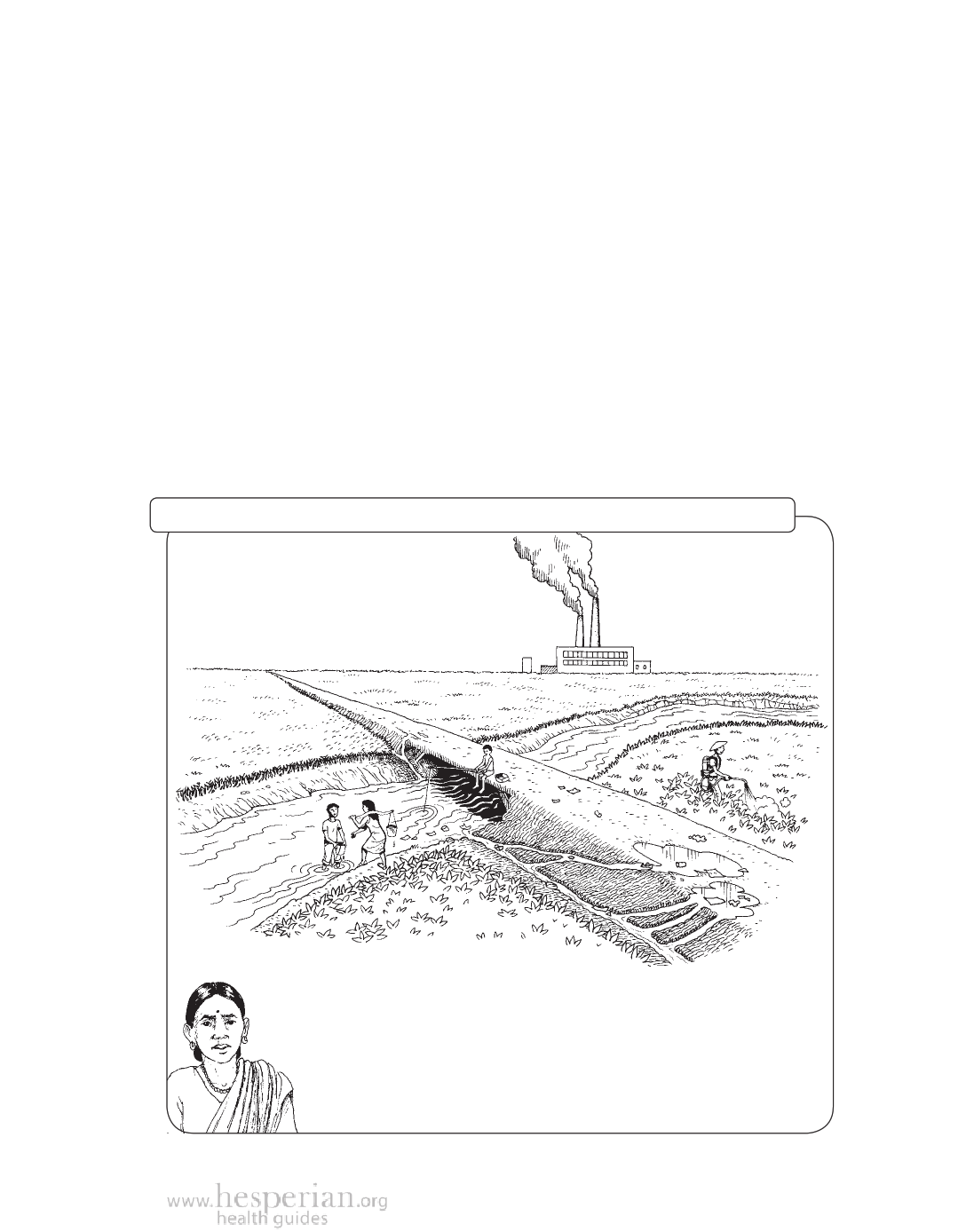
Toxic pollution in water
59
Toxic Pollution in Water
Agriculture, mining, oil drilling, and many other industries dump chemical
wastes into water sources. This makes the water unsafe to drink or to use for
preparing food, for bathing, or for irrigation.
In some places, water may be contaminated by toxics that naturally
exist in the earth, such as arsenic (see page 61) and fluoride (a natural
substance that causes brown spots on teeth and severe bone weakness). As
the groundwater is used up, the risk of natural toxics grows because they are
concentrated in the water that is left.
Whether they are from industry or from the earth itself, toxic chemicals
are usually invisible and difficult to detect. Testing water in a laboratory,
possibly at a university, can help detect both natural toxics and chemicals
from industry. If possible, try to get the water to the laboratory within
6 hours of collecting it.
Drawbcinnbgxnfocbr discussion: How do toxic chemicals get in the water?
Questions for discussion:
• In what ways do you see toxic chemicals getting into
the water?
• What can be done to protect water from toxic pollution?
• How might drinking this water or eating fish from it affect
people’s health?
A Community Guide to Environmental Health 2012